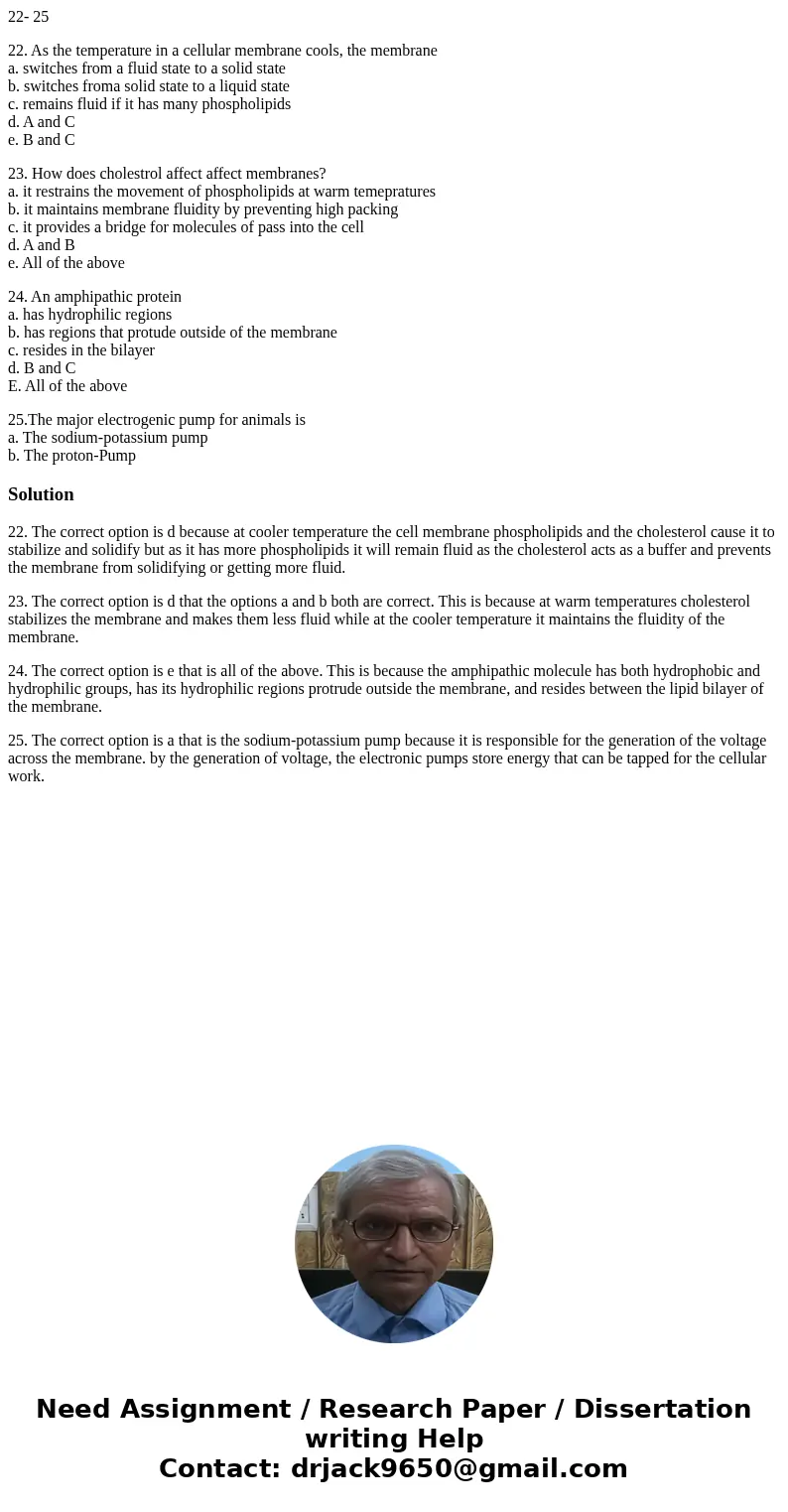22 25 22 As the temperature in a cellular membrane cools the
22- 25
22. As the temperature in a cellular membrane cools, the membrane
a. switches from a fluid state to a solid state
b. switches froma solid state to a liquid state
c. remains fluid if it has many phospholipids
d. A and C
e. B and C
23. How does cholestrol affect affect membranes?
a. it restrains the movement of phospholipids at warm temepratures
b. it maintains membrane fluidity by preventing high packing
c. it provides a bridge for molecules of pass into the cell
d. A and B
e. All of the above
24. An amphipathic protein
a. has hydrophilic regions
b. has regions that protude outside of the membrane
c. resides in the bilayer
d. B and C
E. All of the above
25.The major electrogenic pump for animals is
a. The sodium-potassium pump
b. The proton-Pump
Solution
22. The correct option is d because at cooler temperature the cell membrane phospholipids and the cholesterol cause it to stabilize and solidify but as it has more phospholipids it will remain fluid as the cholesterol acts as a buffer and prevents the membrane from solidifying or getting more fluid.
23. The correct option is d that the options a and b both are correct. This is because at warm temperatures cholesterol stabilizes the membrane and makes them less fluid while at the cooler temperature it maintains the fluidity of the membrane.
24. The correct option is e that is all of the above. This is because the amphipathic molecule has both hydrophobic and hydrophilic groups, has its hydrophilic regions protrude outside the membrane, and resides between the lipid bilayer of the membrane.
25. The correct option is a that is the sodium-potassium pump because it is responsible for the generation of the voltage across the membrane. by the generation of voltage, the electronic pumps store energy that can be tapped for the cellular work.

 Homework Sourse
Homework Sourse